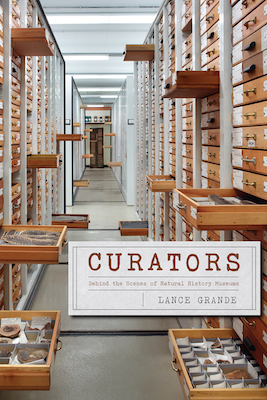Deep in the Peruvian rain forest, a helicopter descends into a clearing. Moving quickly, its passengers emerge from its open side doors and spring nimbly to the ground the moment its skids touch the surface. They have to move fast to get their equipment unloaded and operational. Time is of the essence. The rest of the team will arrive soon; everything must be set up for when they do. No effort can be wasted if they are going to complete their assignment; everything must flow seamlessly – and even then, they all know that the their task is, realistically, impossible. They will simply have to do all they can before their designated extraction time.
Covert military operation? Far from it. It’s a rapid inventory team from The Field Museum in Chicago’s Keller Science Action Center seeking to assess a plot of previously unexplored forest before it is disturbed by logging or simply cleared for agricultural use. Needless to say, it’s not the type of activity most people think of when they imagine the activities of the curators and other scientists working out of the public eye in the world’s natural history museums. But then as Lance Grande, the Negaunee Distinguished Service Curator at The Field Museum, so vividly depicts in his remarkable new book Curators; Behind the Scenes of Natural History Museums, little about the activities of natural history museum curators and their teams is what it might be commonly thought to be.
Structured loosely as a memoir but focusing primarily on his professional rather than private life, Dr. Grande’s book chronicles his inspired, delightfully “non-linear” development as a scientist through the recounting of his adventures in the field, generally in partnership with, or in relation to, a veritable who’s who of contemporary researchers. But don’t think this is a “Oh the people I’ve known!” sort of book. Deferential and humble at all times, Grande’s narratives overwhelmingly place the work and achievements of his colleagues, both at The Field as well as at a number of other institutions – and on more than one occasion individuals making their way “under their own sail,” before his own. It is this emphasis on people working together that conveys one of the most important underlying messages of the book: science isn’t a solitary activity – it’s greatest strength lies in collaboration.
And it’s the stories of Grande’s collaborations that make the book such an enjoyable and interesting read. From working in Mexico with the charismatic and unconventional (to say the least) Shelton Pleasants Applegate, to examining radioactive fossils in Moscow and the staking out the Alabama Deep Sea Fishing Rodeo with Willy Bemis, where they traded filleting services to the competitors in exchange for fish skeletons to add to the museum’s collection, Grande’s recounted adventures could easily serve as the plot for a very entertaining movie.
But as compelling to read as his own adventures are, two of his (in this reviewer’s humble opinion) best stories don’t particularly involve him. The first, comprising an entire chapter, recounts the remarkable discovery and subsequent struggle for possession of SUE, the Tyrannosaurus rex whose fossilized skeleton now resides in the pride of place at The Field. The second profiles the entomologist Dr. Corrie Moreau’s inspirational and determined quest to achieve her doctorate and subsequent present position as a tenured associate curator at The Field – at the time Grande was writing the book, the youngest of all the museums curators. Different as each of these stories may be in its details, both paint remarkable pictures – one expansive and encompassing of a vast cast of players, the other very intimate and focused on the unrelenting determination of one woman to achieve a goal that few others would have even dared to speak aloud more less actually attempt – of the variety of behind-the-scenes activities that is the practice of museum-based science.
Of course, not everything curators do is quite as “Jones-esque” (as in Indiana) as Grande’s field adventures; it can also be bureaucratic and business-like at times. From managerial and budgeting responsibilities to playing host to visiting dignitaries, the daily activities of a curator can at times be little different than those required of someone in most any other professional position. Yet even in his depictions of such admittedly less-than-exciting work, Grande manages to infuse his narrative with subtle reminders of how even such mundane activities make possible the larger, more laudable and publicly visible goals of museums.
In bringing the book to a close, Grande presents his readers with a reflection and and exhortation. In “Where Do We Go From Here,” the book’s final chapter, Grande reflects upon the roles and responsibilities of natural history museums to science and to society, and juxtaposes these with the – there is no other way to say it – sad state of scientific literacy throughout large swaths of the general public. Yet he does not wax morose; far from it, in fact. He exhorts his readers to nurture curiosity, their own as well as that of others – particularly children – in hope that through it may be fulfilled his closing wish for the world; that it may “never run out of passionately curious people with extraordinary aspirations.”
 Title: Curators; Behind the Scenes of Natural History Museums
Title: Curators; Behind the Scenes of Natural History Museums
Author: Lance Grande
Publisher: The University of Chicago Press
Pages: 432 pp., with 146 color plates
Format: Cloth
ISBN: 9780226192758
Published: March 2017
In accordance with Federal Trade Commission 16 CFR Part 255, it is disclosed that the copy of the book read in order to produce this review was provided gratis to the reviewer by the publisher.
